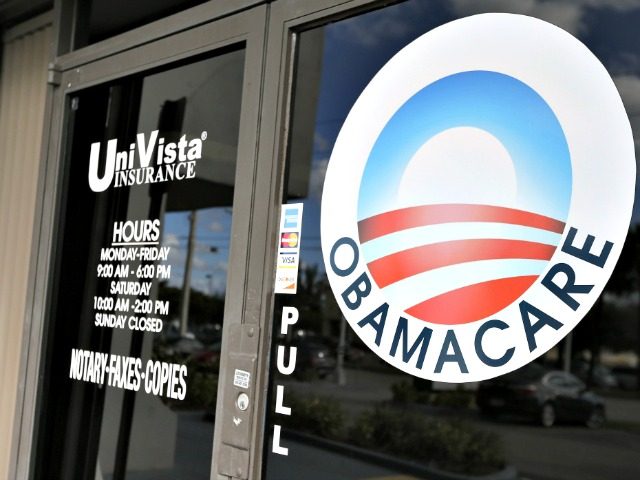Obamacare average monthly premiums spiked by 27 percent in 2018, according to new data released by the Centers for Medicare and Medicaid Services (CMS).
On Monday, CMS released three reports that detail the current status of the Federal Obamacare and state-based exchanges, as well as the individual health insurance markets. In a press release, CMS suggests that “these reports show that state markets are increasingly failing to cover people who do not qualify for federal subsidies even as the Exchanges remain relatively stable.”
“Rising premiums have left unsubsidized people with poor health coverage options and dramatically increased the federal cost of premium subsidies,” CMS added.
CMS Administrator Seema Verma said in a press release on Monday:
As the Trump Administration took office, there were warning signs that we were dealing with a crisis in the individual health insurance market and Obamacare was failing its consumers. These reports show that the high price plans on the individual market are unaffordable and forcing unsubsidized middle-class consumers to drop coverage.
The CMS revealed that average monthly premiums for insurance plans purchased through Obamacare exchanges rose by 27 percent in 2018, even higher than 2017’s 21 percent rate hike. Average federal monthly premiums subsidies also rose by 39 percent in 2018, rising from $373 in 2017 to $520 in 2018. This increase in Obamacare subsidies will likely increase federal spending by roughly $17 billion in 2018.
The government agency also detailed how Americans who do not receive Obamacare subsidies continue to drop out of Obamacare. In plan year 2017, which began in November 2016, there was a 20 percent drop in Americans who enrolled in individual health insurance without Obamacare subsidies. By contrast, subsidized enrollment only dropped by 3 percent, or 223,000 people, in the same period.
During this 2017 plan year, monthly average premiums for Obamacare rose by 21 percent.
The CMS noted that many state individual health insurance markets entered a death spiral in the plan year 2017, with unsubsidized enrollment dropping by more than a third in 14 states, particularly in Arizona which experienced a 73 percent decline.
Meanwhile, President Donald Trump has taken executive action to offer Americans more affordable options compared to the crumbling Obamacare. Trump signed an executive order last October which expanded Association Health Plans (AHPs) as well as short-term limited-duration health plans.
Sen. Rand Paul (R-KY) lauded the expansion of AHPs as the “biggest free-market health care reform in a generation.”
The AHP rule allows for small businesses, and industries to band together offer Americans cheaper health insurance options. The Congressional Budget Office (CBO) estimated that roughly 400,000 previously uninsured Americans will obtain health insurance under AHPs, while an Avalere Health study found that 3.2 million Americans will leave Obamacare for AHPs.
The study also revealed that Americans would experience drastically lower health premiums through AHPs compared to Obamacare.
AHPs would be roughly $2,900 lower per year compared to the small-group market and $9,700 lower per year compared to the individual market.
Avalere cites that the lower average premiums in AHPs mostly result from a healthier insurance pool due to “risk selection” and less generous offerings.
Cato Institute health scholar Michael Cannon suggested that short-term health plans cost 90 percent less than Obamacare plans.
“This will cost the United States government virtually nothing and will provide people great, great health care,” President Trump said in October.

COMMENTS
Please let us know if you're having issues with commenting.